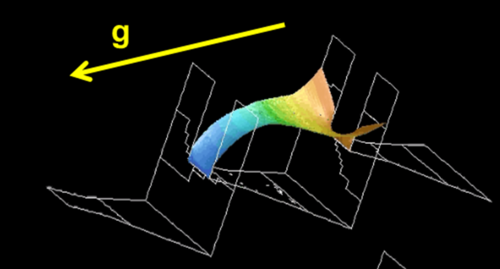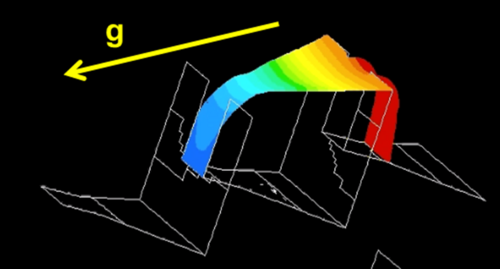Numerical simulation is crucial in many microfluidics applications as experiment is difficult to conduct due to the very small dimensions. The transport of liquid through micro-channels is the basis of building many microfluidic devices for biomedical purposes. Currently we work on modelling the capillary-driven flow in micro-channels with application in transdermal drug delivery. As surface topology of the micro-channel influences the motion of liquid-gas interface, we have numerically investigated the liquid transport in micro-channels especially at sudden change in cross-sectional area (figure 1). Since such simulation using interface capturing methods (e.g. VOF method) is demanding, we also came up with the idea of improving the conventional VOF method for efficient simulation.
 Figure 1: Numerical simulation of liquid transport in complex micro-channels. The images display the moment the interface reaches
the sharp edges from both sides (top), and the moment the interface is pinned at one edge and moves on the other edge (bottom). This flow behaviour has application in uni-directional liquid transport through microfluidic devices
Figure 1: Numerical simulation of liquid transport in complex micro-channels. The images display the moment the interface reaches
the sharp edges from both sides (top), and the moment the interface is pinned at one edge and moves on the other edge (bottom). This flow behaviour has application in uni-directional liquid transport through microfluidic devices
In addition, numerical modelling of complex biological flows (e.g. blood) is one of our current lines of research. As such complex flows typically consist of a (pure) liquid phase and a set of deformable particles (e.g. red blood cells), we plan to develop a reduced order hybrid approach to model the dynamics of red blood cells in micro-capillaries. Our new PhD student Achuth B. Nair will investigate such complex biological flow by means of numerical simulations and experiments.
